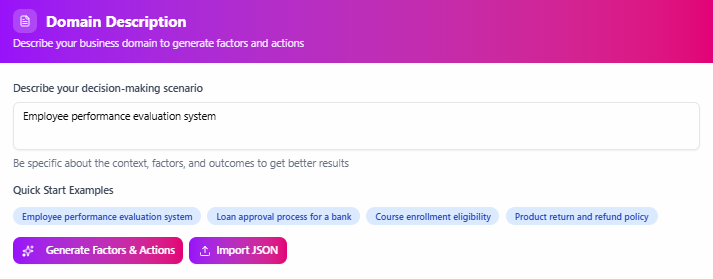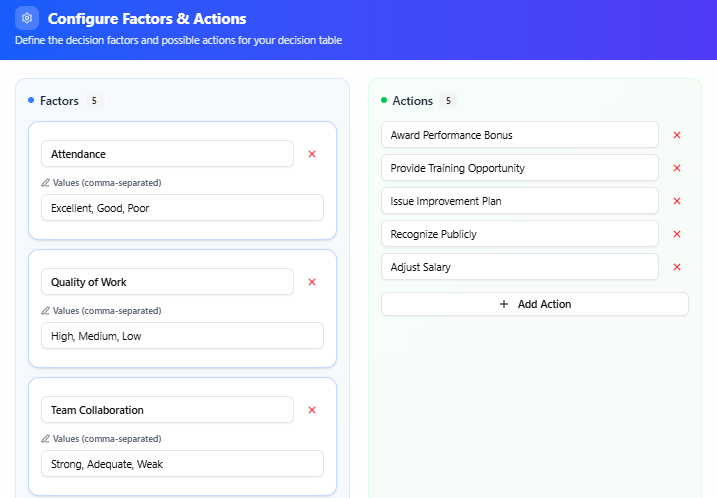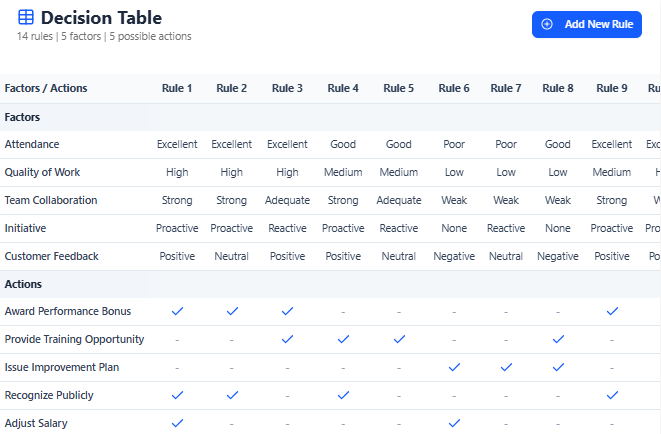Now Reading: AI Decision Table Example: Employee Performance Evaluation
-
01
AI Decision Table Example: Employee Performance Evaluation
AI Decision Table Example: Employee Performance Evaluation
Decision tables are a fantastic tool for simplifying complex logic, and they’re easy to create. This guide will walk you through the three simple steps to build one for any business process, and here is an example of an Employee Performance Evaluation System. This allows you to ensure consistent, clear, and logical outcomes every time.
Step 1. Describe Your Scenario
First, you’ll describe your business process or scenario. For example, you can fill in Employee Performance Evaluation System. Click Generate Factors & Actions to proceed.

Step 2. Configure Factors & Actions
Next, the AI will analyze your description and identify a set of critical Factors and Actions. Factors are the conditions that influence the final decision, while Actions are the resulting outcomes. The AI helps by finding every possible factor and action you might not have considered. You can add more, or edit and delete the ones suggested, to ensure the lists are exactly what you need.

Step 3. Generate and Export
Finally, generate the decision table. This creates a matrix of rules where each rule maps a specific set of factors to its resulting action. You can then export the table in multiple formats, including CSV, Markdown, and JSON.


